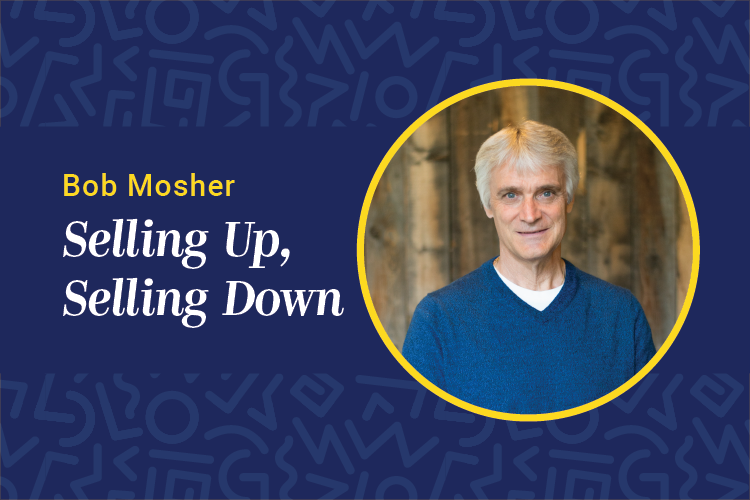 I have the highest appreciation for what subject matter experts bring to our industry. They are the performer all of our learners aspire to be and the individuals we hope we can empower our leaners to become. They have “arrived” and have a unique perspective. That’s why we count on them so heavily when doing our work.
I have the highest appreciation for what subject matter experts bring to our industry. They are the performer all of our learners aspire to be and the individuals we hope we can empower our leaners to become. They have “arrived” and have a unique perspective. That’s why we count on them so heavily when doing our work.
With that said, there’s a dark side to having achieved that level of mastery, one that can have such a devastating effect on what we build that I made the mistake at a recent conference of literally saying, “Stop using SMEs!” Wow, did that backfire. Here’s the reality: We will and should never stop using SMEs in our work, but there’s a word they use to dictate every piece of learning and support content we create that distorts their view, and that word is “important.”
To a SME every piece of information is important. They use phrases like, “It’s very important that they understand this before they begin to do anything.” In these types of statements lies a fundamental reason that our learning solutions don’t drive the performance impact the business expects. It’s an enlightenment first, enablement second model. And there are three things we need to guard against with this approach.
The first is that “knowing” and “understanding” don’t always lead to the ability to perform. I’m sure we’ve all known people we’d call book smart but not street smart. They’ve mastered the ability to understand something, but their ability to apply that knowledge in the real world just isn’t there. This jump between mastery and application is the greatest challenge our learners face. Knowledge is only applicable when it has context. We do our best to add context through examples, metaphors and practice with case-studies, but true context is only realized in the flow of work. Unless we enable that transfer to happen, knowing and understanding lose their grip and are lost in the volume of information SMEs hope we’ll cover in the short time we have with our learners.
The second thing we must acknowledge is that because we start with enlightenment, we overly focus on enlightenment tools and approaches and don’t give ample time to creating and teaching enablement tools.
For example, let’s look at the infamous binder. I’ve yet to walk into an organization across the world that hasn’t created more binders than any other instructional tool in their toolset. You’ll find binders everywhere, typically on a bookshelf above or behind each employee. But you rarely see them open on desks being routinely referenced in the workflow. That’s because a binder is one of the least effective reference and enablement tools there is. It’s almost impossible to find answers quickly, and it’s even harder to keep them current. It’s written in for format and flow that instructs, not supports. It breaks all the rules of an effective embedded resource that can directly support someone in the context of doing their job. Yet, if you walk into a classroom, they are proudly displayed on every student’s desk. We give learners highlighters, sticky notes and bookmarks to optimize their use in class. The instructor frequently references page after page as they move through the course. This is all geared around an enlightenment strategy for instruction, not enablement for performance. We need to move away from using enlightenment tools in class and start using and teaching the enablement tools found in performance support assets.
Finally, the flow of instruction has to shift from one of understanding first to doing and performing first. I recently sat through a leadership class where the entire first day was lectures around the seven competencies that the organization felt were essential to leadership. In fact, that was the name of the course — The Seven Essential Competencies of Leadership. Competency after competency was introduced, each in isolation of the true context of leadership. Instead of enabling those competencies, learners were enlightened on each first.
The problem with this approach was that every student in the class had to have been with the company for least two years to qualify to be a leader. Each had years of experience witnessing first-hand both effective and ineffective leadership in the context of doing their job. No effort was made to bring that wealth of experience into the discussion. The first day should have been stories told by the students of where leaders excelled, where they failed, and the tools and techniques used when leading. In other words, what had enabled the effective performance they’d all witnessed? What was the context of that performance? That approach would have naturally led to the seven competencies needed to lead.
We have to move beyond a place where enlightenment assumes doing and become a place where enablement is initiated and empowered. It’s cliche, but if you feed a person a fish, they’re starving in the morning. If you teach them to fish, they feed themselves for a lifetime. But we’ve been conditioned to think there’s just so much about fishing they need to know before they even bait a hook.















